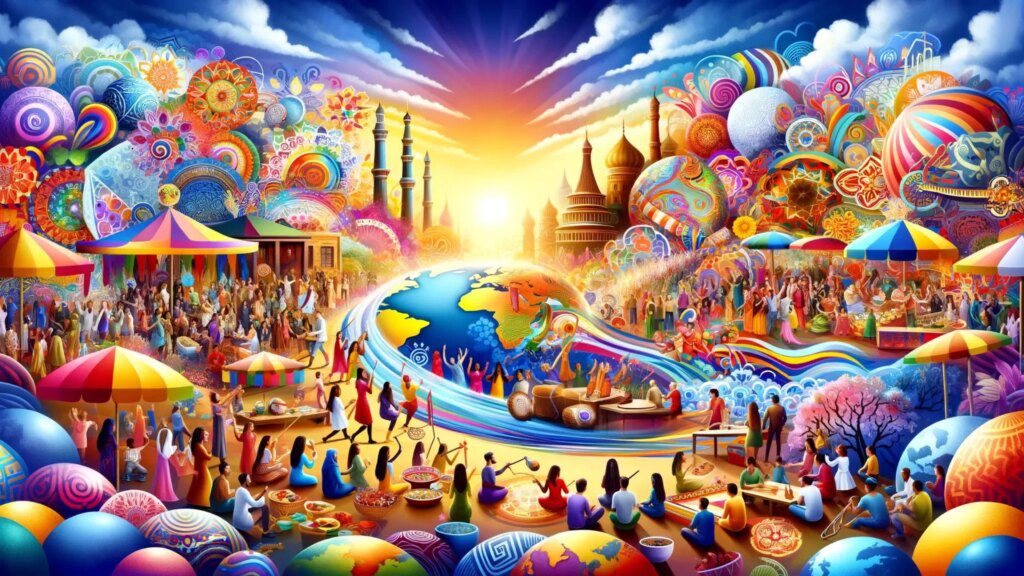Festivals are a great way to celebrate and embrace different cultures. They offer a unique opportunity to experience traditions, food, music, and dances from around the world. Diwali in India celebrates the victory of light over darkness, while the Carnival in Brazil is a vibrant celebration with music and parades. Chinese New Year in China is a time for families to come together and welcome the new year with prosperity. Oktoberfest in Germany is a beer festival that celebrates Bavarian culture. Day of the Dead in Mexico honors deceased loved ones with altars and traditional offerings. Embracing diversity through festivals allows individuals to immerse themselves in new cultures and appreciate the richness of our world.
Embrace Diversity: A Guide to Celebrating Different Cultures Through Festivals
Introduction
One of the best ways to immerse yourself in a new culture is by attending a festival. Festivals are a celebration of a community’s traditions, values, and way of life. They offer a unique opportunity to learn about different cultures, try new foods, and experience traditional music and dance. In this guide, we’ll explore some of the world’s most vibrant and diverse festivals that celebrate different cultures.
Diwali, India
Diwali, also known as the Festival of Lights, is one of the most popular festivals in India. It is a five-day celebration that marks the victory of light over darkness and good over evil. During Diwali, people decorate their homes with oil lamps, candles, and colorful rangoli designs. They also exchange gifts, feast on traditional sweets, and set off fireworks. The highlight of the festival is the lighting of diyas (oil lamps) and the bursting of firecrackers, creating a spectacular display of lights and colors.
Carnival, Brazil
Carnival is Brazil’s biggest and most famous festival, attracting millions of visitors from around the world. It is a vibrant and colorful celebration that takes place in the days leading up to Lent. During Carnival, the streets of Rio de Janeiro and other Brazilian cities come alive with music, dance, and parades. Participants wear elaborate costumes and masks, dance to samba music, and take part in street parties known as blocos. The highlight of Carnival is the Samba Parade, where samba schools compete to be crowned the champion of the parade.
Chinese New Year, China
Chinese New Year, also known as the Spring Festival, is the most important festival in China. It is a time for families to come together, honor their ancestors, and usher in the new year with good fortune and prosperity. During Chinese New Year, people decorate their homes with red lanterns, couplets, and paper cuttings. They also exchange red envelopes filled with money, eat traditional foods such as dumplings and fish, and light fireworks to ward off evil spirits. The highlight of the festival is the dragon and lion dances, which are believed to bring luck and prosperity for the coming year.
Oktoberfest, Germany
Oktoberfest is the world’s largest beer festival held annually in Munich, Germany. It is a 16 to 18-day extravaganza that celebrates Bavarian culture, traditions, and of course, beer. During Oktoberfest, millions of visitors from around the world come together to enjoy traditional Bavarian foods such as sausages, pretzels, and schnitzel, as well as a wide variety of beers brewed in Munich. The highlight of the festival is the opening parade, where the mayor of Munich taps the first keg of beer to kick off the celebrations.
Day of the Dead, Mexico
Day of the Dead, or Día de los Muertos, is a Mexican holiday that honors and remembers deceased loved ones. It is a time for families to come together, build altars, and offer food, flowers, and other offerings to their ancestors. During Day of the Dead, people paint their faces to resemble skulls, wear colorful costumes, and participate in parades and processions. The highlight of the festival is the traditional sugar skulls and pan de muerto (bread of the dead) that are shared among family and friends.
Conclusion
Attending festivals is a great way to celebrate and embrace the diversity of different cultures around the world. Whether you’re interested in trying new foods, learning traditional dances, or simply enjoying the festive atmosphere, there is a festival for everyone. So why not pack your bags, immerse yourself in a new culture, and experience the magic of a world filled with diversity and celebration.
